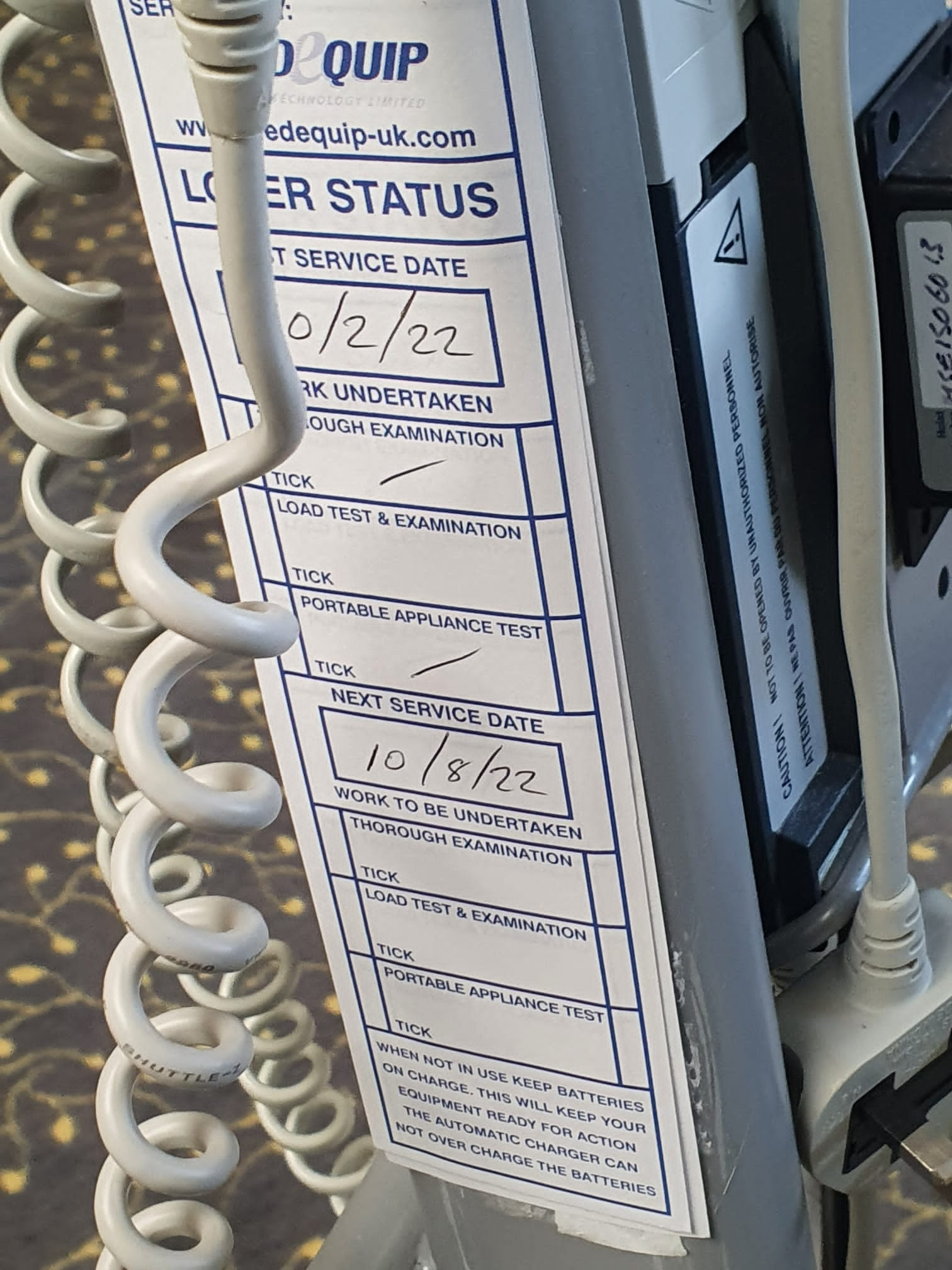Health & Safety
Hoisting Patients


Hoisting Patients (Part Two)
This is the second part of my blog about Hoisting Patients. Here I will try to identify the things you must do before any lifting procedure involving hoists.
Check you Patient Hoist before each use.
When using a hoist in a health care setting, such as in a hospital or in a care environment, such as a person’s home, it is always important to do a series of hoist checks before carrying out a lift.
It is easy to become complacent when hoisting is just a small part of your job, however if these checks are not done, then the result could end up being life threatening.
Training
Have you been trained to use the patient hoist? If the answer is no you shouldn’t be hoisting anyone and should apply for training asap.
Under the Health and Safety at Work Act 1974, Employees need to take care of their own health and safety and that of persons at work who may be affected by their actions or omissions, so by hoisting someone without knowing how to do so can lead to injury, or worse, to both the employee and person being moved.
Service Requirements of Equipment used for Hoisting Patients


Check the patient hoist is Working
Before using the hoist on someone even if LOLER service has been carried out check that the hoist is working. Is the battery charged? Is the hoist going up and down? Are the hoist legs opening? Is there any loose wiring, unusual noises heard and are the wheels moving freely? With ceiling track hoists also check that the hoist is running freely on the tracking system. Check you know where the emergency stop buttons are on your hoist in case you need to use them.
Safe Weight Limit (SWL)
The SWL should always be visible on the hoist indicating how much weight the hoist can safely manage. Before hoisting Patients you should also be aware of their weight, as exceeding the weight could lead to an incident.
Check the Sling
Before using a sling make sure it is suitable for the person it is intended for. Is it the correct fit and what is the SWL? If the SWL of the sling is 120 kg and the hoist SWL is 140kg, the persons weight cannot exceed 120kg. Check for any damage such as fraying, holes etc. Do not use a sling with any damage and remove it from service. Washable slings should be machine washed as per label instructions as needed. Disposable slings should not be machine washed, small areas of soiling can be wiped down, otherwise they must be disposed of if badly soiled, damaged or if the patient is discharged. Remember disposable slings should not be shared. The serial number on each sling should be visible, if not the sling should be replaced.
Check the Brakes
Brakes should only be applied when not using or storing the patient hoist. If the brakes are applied when in use it will not be able to find its centre of gravity and could topple over causing severe harm to the person in the hoist.
Our Manual Handling Training includes hoist practical work. However not everyone wants or needs to have a full course. If you are new to hoisting or your staff need hoist training, we can do a Bespoke Hoist Course for you.
If you would like to discuss further please email me, Wendy Attew, Senior Moving and Handling Consultant, at w.attew@usc.org.uk or give me a call on 07725956316
